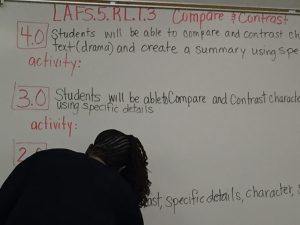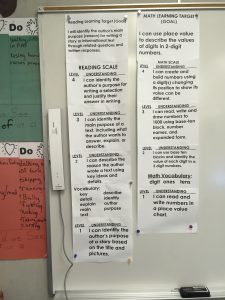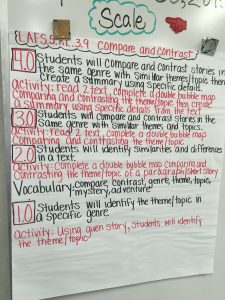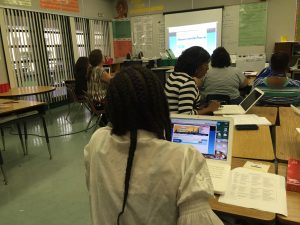One of the brightest trends that I see in education today is a broad nationwide move to have students own their learning and to adopt a growth mindset. I’m particularly encouraged to see that this is a distinct trend in elementary schools.

Learning Goals – Standards – are Posted
In school after school, in Twitter chats, during conference discussions, and in other online sharing, I hear principals and teachers citing details that convince me that this is a broad-based approach. And it’s really healthy. Since student empowerment was one of the founding principles of VocabularySpellingCity, I take just a little pride in the fact that we are helping to push this trend forward.
Here are a few places that I see the trend:
In many schools, students are made aware of their educational goals each week. It’s important that teachers set goals for the class and share them. The students are encouraged to understand the goals, why they are important, how the skills will be built, and how they will be assessed.

Four Levels of Proficiency are Posted
In an increasing number of schools, each week, teachers are posting not only the standards their students will be working on, but they also establish four levels of proficiency for each standard. These seem to be adopted from Webb’s Depth of Knowledge.
The Four Levels of Proficiency are posted in the classroom as a matrix featuring the standards, ways to demonstrate proficiency, and a hierarchy of levels of proficiency. In some classrooms, there are four sets of standards each week: language arts, math, science, and social studies.
VocabularySpellingCity and Student Ownership of Learning

Four Depths of Knowledge for a Weekly Learning Goal
As I mentioned above, one of VocabularySpellingCity’s original goals, back when we were just SpellingCity, was to empower students to be able to learn on their own. It’s hard to study spelling independently without a tool like VocabularySpellingCity. I published an article on Students Being Able to Own their Learning on their original SpellingCity Forum (now long gone) and then revisited this idea in the October 2015 blog post cited above.
More importantly, as VocabularySpellingCity focused on its mission of improving reading comprehension outcomes by helping students build vocabulary, we identified the importance of enlisting students in the strategy of building vocabulary retention (see paragraph 5) as a key step in the system.
Students can catch up, keep up, or stay ahead of their grade level by using our activities with our ready-made grade level lists for vocabulary and spelling. For example, this 2nd grade spelling word list gives 2nd grade students (or ambitious first grade students!) the opportunity to test their skills and see how many of these grade-level words they know.
These premade grade-level lists help students figure out what’s expected of them, and how they can continue to improve. Alternatively, letting students create their own lists can also be a great way to help them get motivated.
Most recently, I’ve written on how letting students create their own lists on VocabularySpellingCity helps encourage students to take control and ownership of their learning. I’ve also detailed how teachers can implement this by changing a single setting in their accounts.

If any of you have examples of how students are owning the learning in your classroom and/or photos to share, please send them along. I’ll retweet and post!
